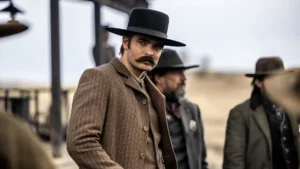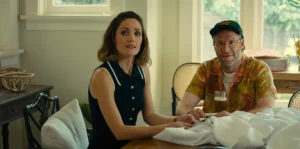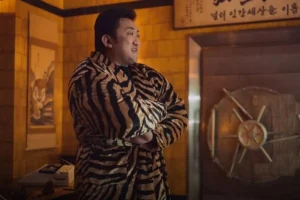Despite already boasting one of the most lurid, original, promising and peculiar catalogues in UK filmmaking, director Ben Wheatley and his co-writer, Amy Jump, have nonetheless delivered us Free Fire, an enjoyable small-scale distraction that serves as a feature-length answer to a question nobody was asking: What, exactly, would a realistic gunfight actually look like?
You can tell right from the outset that Free Fire isn’t leaden with the usual dramatic complexity, thematic heft and grim sensibility of Wheatley’s earlier work, which includes 2015’s High-Rise, a dystopian drama adapted from J.G. Ballard’s iconic 1975 novel, and an extraordinarily nasty bit of work called Kill List, from 2011. It’s about as stripped-down and simplistic as movie premises get, really. A handful of criminals amass in a deserted Boston warehouse to conduct an arms sale, and thanks to an unexpected disagreement, everyone involved ends up shooting at everyone else for the entire movie.
There really isn’t anything more to it than that. We open with Stevo (Sam Riley) and Bernie (Enzo Cilenti) driving to the location of the deal, which is nestled in a rundown neighbourhood that could just as easily be the setting for a zombie apocalypse. (The movie was filmed in Brighton, so fair enough.) The buyers are two Irish Republican Army representatives, Chris (Cillian Murphy) and Frank (Michael Smiley). The seller is Vernon (Sharlto Copley, doing the Sharlto Copley thing), who has a trio of cohorts in Martin (Babou Ceesay), Harry (Jack Reynor) and Gordon (Noah Taylor). The deal’s intermediaries are Justine (Brie Larson) and Ord (Armie Hammer). Imagine all these people as dominoes, if you like. They’re set up in a long line, close together, perhaps too close, and as each one teeters, you can tell that it won’t take much to upset the entire formation. Two of the dominoes had a bust-up the night before, and weren’t expecting to see each other stood in the same line. And there… we… go.
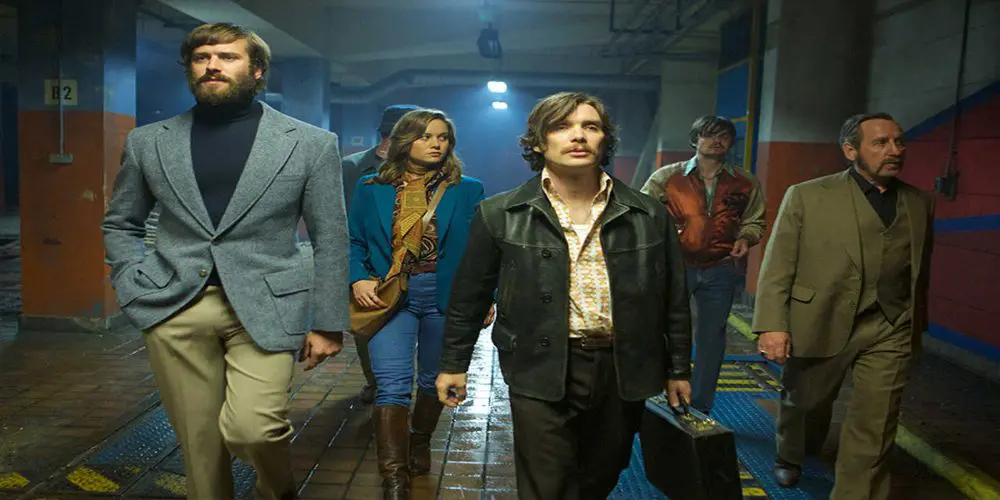
Once the tumbling starts, it never stops. It takes about 90 minutes for the last piece to fall, and you get the sense that a hair longer than that and the fun of the collapse would have dissipated, but goodness me, it’s an enjoyable ride in the meantime. None of this is particularly original; in fact, it nakedly imitates the finale of Quentin Tarantino’s Reservoir Dogs right down to the grimy warehouse setting. But the novelty comes from a notional realism. These characters rarely hit their targets, and when they do, they hit arms and legs and hands and feet. They wound, not kill. And these aren’t your typical movie wounds. They’re debilitating injuries. They hurt. They need treating. They’re susceptible to infection from the ropey conditions of the warehouse. And after a while, every character is somehow injured, stumbling and crawling around, trying to work out who’s on whose side and making their ways, slowly, to the exit.
Sometimes this is complicated by the arrival of additional characters, or the revealing of hidden motives and personal grudges. But Wheatley’s remarkable sense of spatial geography and character psychology means that any complication feels welcome, never overwhelming, and you always know exactly where everyone is and what they’re feeling, despite the warehouse’s overpopulation. The writing’s economy helps. This is a chatty movie, but it doesn’t revel in the thrill of language for its own sake, like a Tarantino picture might. All the dialogue is load-bearing. The jokes and the put-downs and the screamed insults establish personality and allegiance. The clarity is startling, in a movie so reliant on chaos.
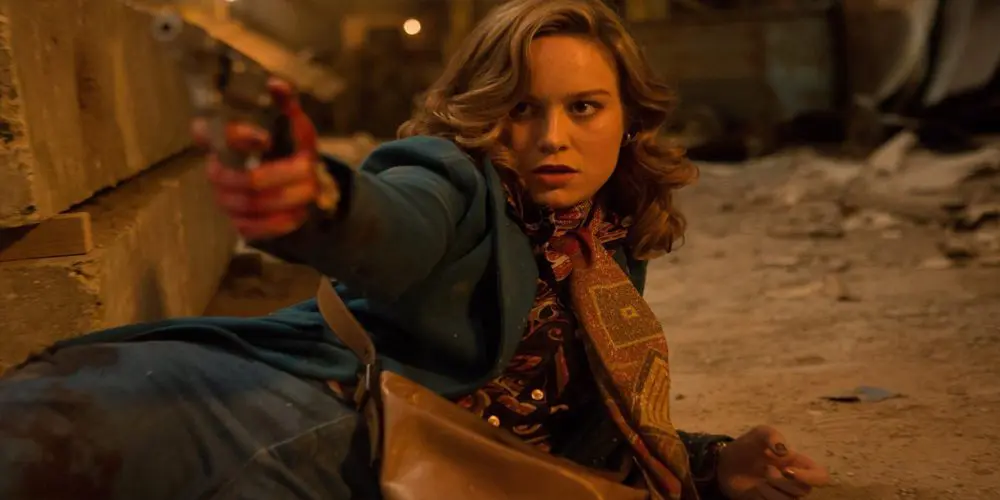
Within that chaos is a cast stocked with reliable character-actors and recognisable stars, most of whom are playing outside their wheelhouse. It’s nice to see Brie Larson getting her fill of indie grit before she disappears into the sleek innards of Marvel’s menagerie, and Armie Hammer is better here than he’s been in anything for a long while. He’s another handsome male star, like Ryan Reynolds and arguably Ryan Gosling, who seems better-suited to comedic roles but has been stuck with generic leading-man fare simply because he looks like a generic leading man. Not that he doesn’t look good in a blazer and turtle neck, but almost everyone in Free Fire is nattily dressed. It’s full of wide collars and curls and ostentatious scarves that double as tourniquets when the shooting starts.
The costuming – along with some subtextual business about the financial crash and the decline of old-fashioned manual labour – hints at the movie’s 70s period setting, but Free Fire could realistically take place anywhere and at any time. This isn’t a movie full of ideas – it’s an idea that someone made a movie out of. And, thankfully, that someone was an incredibly talented auteur who knows exactly when to pick up his tools and go home. I’m not about to tell you that Free Fire is any kind of masterpiece, or that it’ll even stick with you for longer than a few days, but it’s a damn fine piece of filmmaking that’s really enjoyable for as long as it lasts. See it.


